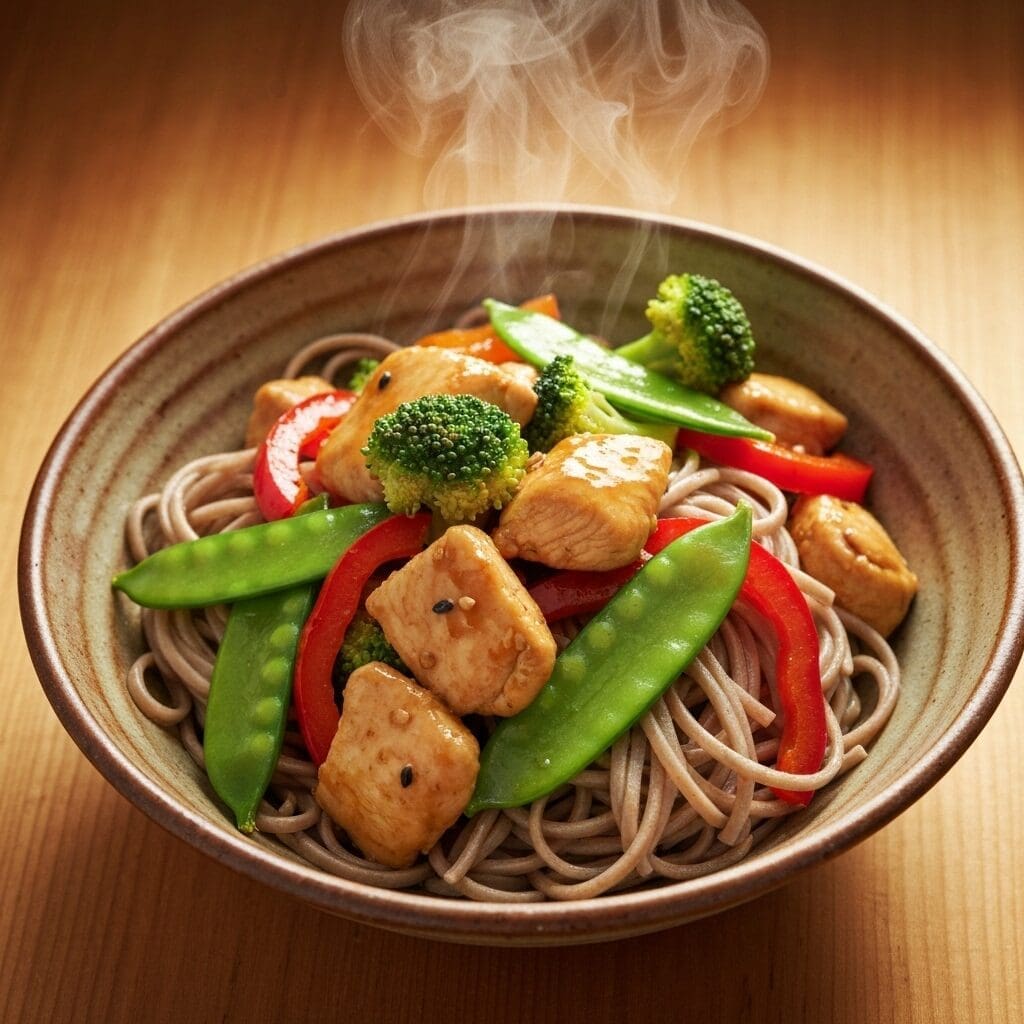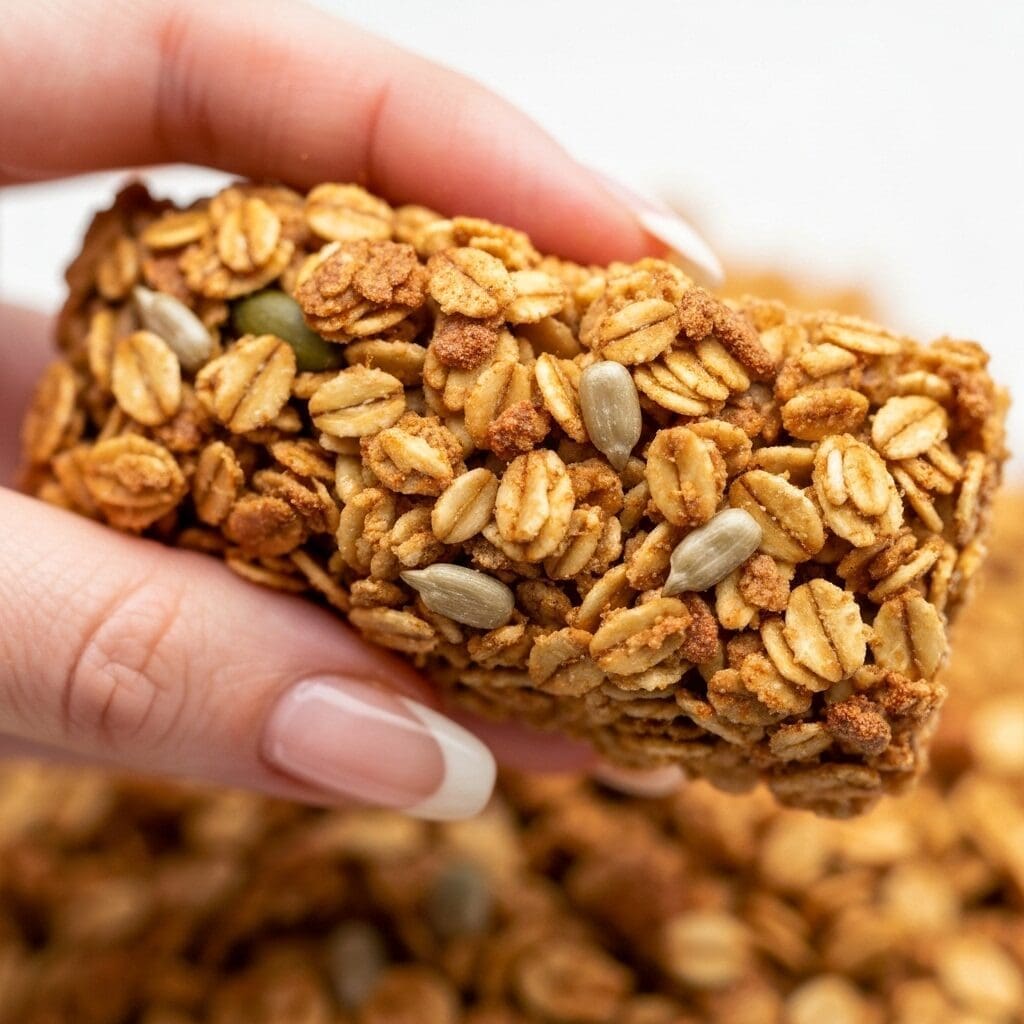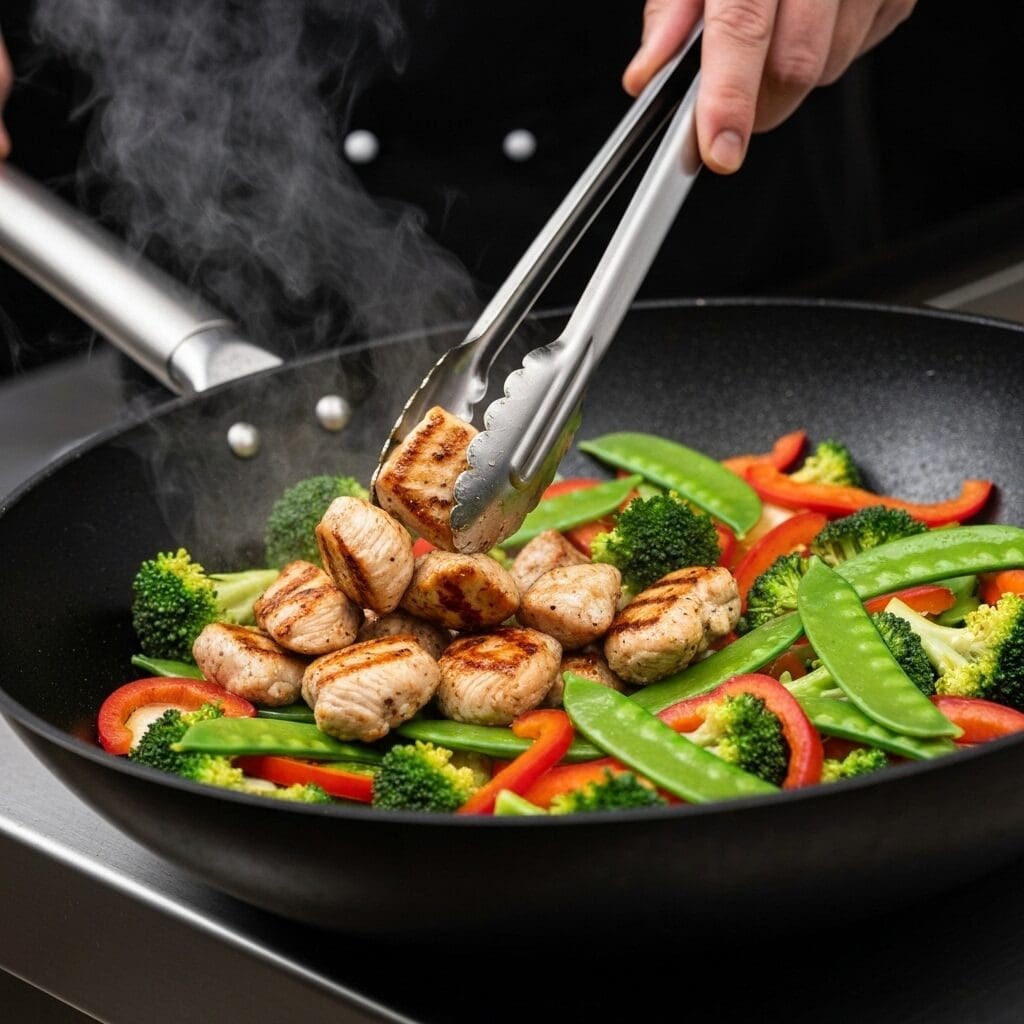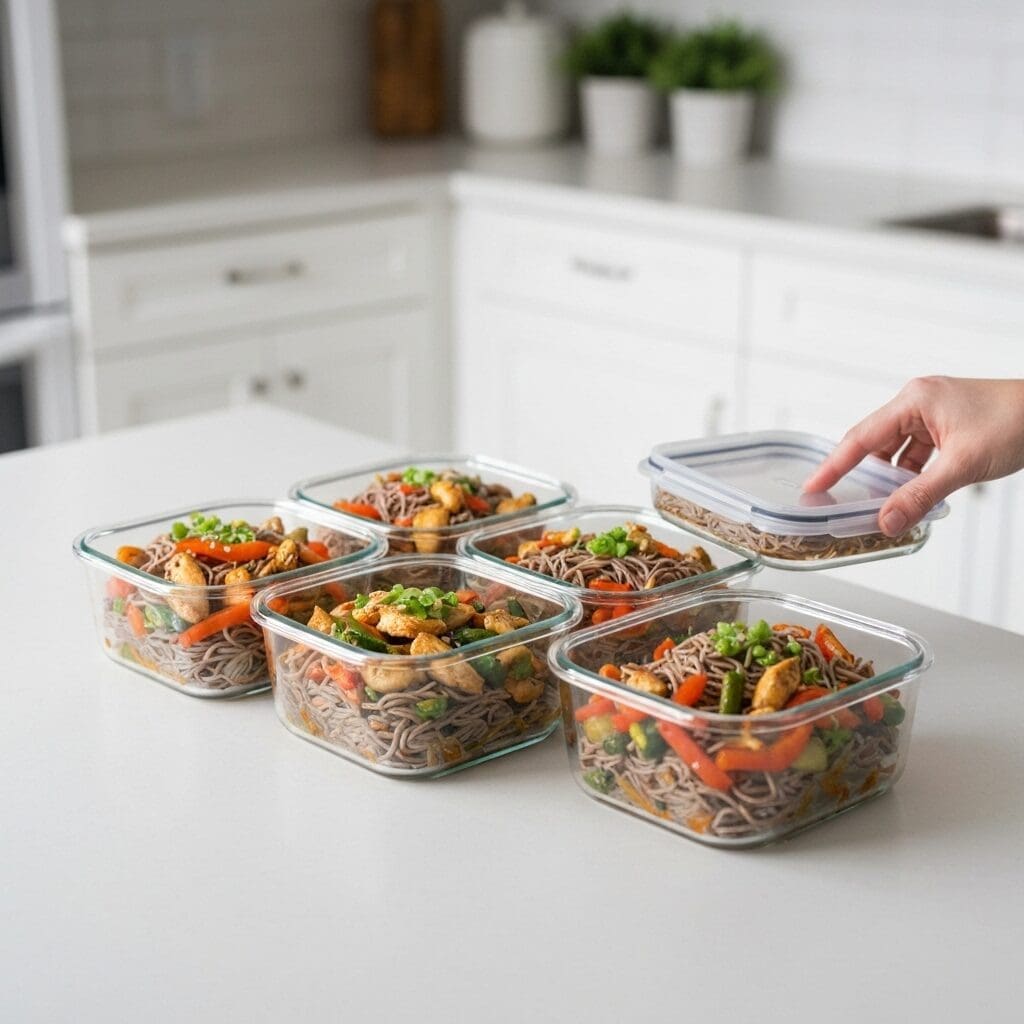Soba Noodle Chicken Stir-Fry: Your Guide to a Quick, Healthy & Delicious Meal

Life gets busy, and sometimes the thought of cooking a nutritious meal after a long day feels overwhelming. The temptation to reach for takeout is strong, but what if you could whip up a vibrant, balanced, and incredibly satisfying dish faster than delivery?
Enter the humble stir-fry – a culinary superhero renowned for its speed and versatility. Today, we’re elevating the classic stir-fry with a focus on smart ingredient choices and maximum flavor.
Forget bland, heavy meals; we’re talking about a light yet filling soba noodle chicken and veggie stir-fry that’s bursting with fresh tastes and packed with goodness. This isn’t just a recipe; it’s your guide to making healthy eating effortless, delicious, and a staple in your meal rotation.
Get ready to transform your weeknight dinners!
- Why Soba Noodles Belong in Your Pantry
- Unlock Convenience and Nutrition with Frozen Vegetables
- The Best of Both Worlds: Mixing Real & Veggie Noodles
- The Savvy Swap: Coconut Aminos for a Healthier Stir-Fry
- Crafting Your Perfect Stir-Fry: Tips for Flavor & Texture
- Beyond the Recipe: Making Your Stir-Fry Truly Your Own
- Meal Prep Magic: Soba Stir-Fry for the Week Ahead
- A Nutritional Breakdown: What’s In Your Delicious Bowl?
- Conclusion
Why Soba Noodles Belong in Your Pantry

When it comes to noodles, soba offers a delightful difference. Made primarily from buckwheat flour, these Japanese noodles boast a unique earthy flavor and a firmer texture compared to traditional wheat-based pasta.
But their appeal goes beyond taste – soba noodles are a fantastic nutritional choice. Unlike many refined grains, buckwheat is a pseudocereal, meaning it’s not technically a grain but shares similar nutritional properties.
It’s naturally gluten-free (though always check labels, as some soba contains wheat flour for texture) and rich in fiber, which aids digestion and promotes satiety, helping you feel fuller for longer. Buckwheat also provides a good source of plant-based protein, contributing to muscle repair and overall energy levels.
Look for 100% buckwheat soba for the purest form and maximum benefits. Beyond protein and fiber, soba noodles offer essential minerals like manganese, which plays a role in bone health and metabolism, and thiamine (Vitamin B1), crucial for energy production. Incorporating them into your diet is an easy way to boost your nutrient intake, a fact supported by research in the *Journal of Agricultural and Food Chemistry* which calls buckwheat a modern superfood.
Unlock Convenience and Nutrition with Frozen Vegetables

There’s a common misconception that frozen vegetables are somehow “less good” than fresh. Let’s put that myth to rest!
In many cases, frozen vegetables can be just as, if not more, nutritious than their fresh counterparts, especially if those fresh veggies have traveled long distances or sat in your fridge for days. Here’s why: frozen vegetables are typically picked at their peak ripeness and flash-frozen within hours.
This rapid freezing process locks in vitamins, minerals, and antioxidants, preventing nutrient degradation that can occur during transport and storage of fresh produce. In fact, research from the University of California, Davis, confirms that this process preserves nutrients effectively. Think about it – your broccoli picked months ago and shipped across the country might have fewer nutrients than the one frozen immediately after harvest.
Beyond the nutritional benefits, frozen vegetables are an absolute game-changer for convenience. They come pre-chopped and ready to use, saving you significant prep time and effort.
This means less chopping, less mess, and more time enjoying your meal. Plus, they often offer better value, reducing food waste since you only use what you need.
For stir-fries, an “Asian stir-fry blend” is perfect, but any mix of your favorite frozen veggies will work wonders.
The Best of Both Worlds: Mixing Real & Veggie Noodles

Why choose one when you can have both? Incorporating both traditional soba noodles and spiralized vegetable noodles (like zucchini, carrot, or kohlrabi) into your stir-fry is a brilliant strategy for boosting both nutrition and satisfaction.
This approach offers a fantastic way to increase your vegetable intake without even thinking about it. Vegetable noodles add significant volume and fiber to your dish for very few calories, helping you feel full and satisfied—a benefit highlighted in *Nutrition Reviews* regarding dietary fiber’s role in weight management.
Their crisp-tender texture also provides a delightful contrast to the chewiness of the soba noodles, making each bite more interesting. Kohlrabi noodles, for instance, are known for holding their shape well during cooking and having a very mild flavor, making them an ideal choice if you’re new to veggie noodles.
If you’re feeling ambitious, spiralizing your own fresh vegetables adds a touch of gourmet, but pre-prepped options are equally effective for convenience. This “hybrid” noodle approach is perfect for balancing complex carbohydrates from the soba with nutrient-dense, low-calorie vegetables.
It’s a mindful way to enjoy a substantial meal that supports your health goals without feeling deprived.
The Savvy Swap: Coconut Aminos for a Healthier Stir-Fry

One of the hidden culprits behind restaurant-style stir-fries leaving you feeling bloated and thirsty is often the sky-high sodium content from traditional soy sauce. A single tablespoon of regular soy sauce can contain around 1,000 mg of sodium, which is nearly half of the recommended daily limit for many adults, according to the American Heart Association.
This is where coconut aminos shine as an incredible alternative. Made from the fermented sap of coconut blossoms and sea salt, coconut aminos offer a similar umami-rich, savory flavor profile to soy sauce but with significantly less sodium.
While not entirely sodium-free, many brands contain just 90-190 mg of sodium per tablespoon, a substantial reduction compared to traditional soy sauce, and even less than many “low sodium” soy sauce varieties. Reducing sodium intake is crucial for maintaining healthy blood pressure, a point emphasized by the Centers for Disease Control and Prevention (CDC).
By opting for coconut aminos, you’re making a heart-smart choice without sacrificing flavor in your stir-fry. Always check the nutrition label, as sodium content can vary between brands, and use it mindfully, as even lower-sodium options contribute to your daily intake.
Crafting Your Perfect Stir-Fry: Tips for Flavor & Texture

A great stir-fry is all about technique, ensuring every ingredient is cooked to perfection – tender-crisp vegetables, succulent protein, and flavorful noodles. Here are some pro tips to achieve stir-fry mastery in your kitchen:
- High Heat is Key: Stir-frying means quick cooking at high temperatures. Ensure your pan or wok is hot before adding ingredients. This creates that desirable slightly charred, flavorful exterior on your ingredients.
- Don’t Crowd the Pan: Overloading your pan will steam your ingredients instead of stir-frying them, leading to soggy results. Cook in batches if necessary, especially with chicken and vegetables.
- Cook in Order: Start with ingredients that take longer to cook (like chicken or tougher vegetables like carrots and broccoli), then add quicker-cooking ones (like leafy greens or delicate veggie noodles). Frozen vegetables can go in early to thaw and heat through.
- Garlic Last, Sauce Too: Add minced garlic in the final minutes of cooking your vegetables to prevent it from burning and turning bitter. The sauce, combining coconut aminos, rice vinegar, and garlic, should be added towards the end to coat everything beautifully without overcooking it.
- The Power of Rest: Once your chicken is cooked, remove it from the pan and dice it before adding it back in with the noodles and sauce. This prevents overcooking and keeps the chicken tender and juicy.
Following these steps ensures a perfectly balanced and incredibly delicious stir-fry every time.
Beyond the Recipe: Making Your Stir-Fry Truly Your Own

The beauty of a stir-fry lies in its adaptability. This recipe is a fantastic foundation, but feel free to let your creativity shine and customize it to your personal preferences or what you have on hand.
Don’t be afraid to experiment with different proteins, vegetables, and even sauce variations.
- Protein Power-Ups: Swap chicken for shrimp, tofu (firm or extra-firm works best), thinly sliced beef, or even tempeh for a different flavor and texture profile.
- Veggie Variety: While the frozen Asian blend is convenient, you can explore creative vegetable combinations like mushrooms, baby corn, bok choy, spinach, or even thinly sliced cabbage. The key is to cut them into similar sizes for even cooking.
- Spice It Up: Add a pinch of red pepper flakes for heat, fresh ginger for warmth, or a dash of sesame oil at the end for an aromatic finish. A squeeze of lime juice can also add a bright, zesty note.
- Nutty Toppings & Fresh Herbs: Garnish with toasted sesame seeds, chopped peanuts, or cashews for added crunch and healthy fats. Fresh cilantro or sliced green onions are also excellent for a burst of freshness.
By tweaking ingredients and experimenting with flavors, you can ensure your stir-fry never gets boring and always suits your mood and pantry.
Meal Prep Magic: Soba Stir-Fry for the Week Ahead

One of the unsung heroes of this soba noodle stir-fry is how incredibly well it reheats, making it an ideal candidate for your weekly meal prep. Cooking a larger batch on a Sunday means delicious, healthy lunches or dinners are ready to go, saving you time and decision fatigue during busy weekdays.
Here’s how to maximize its meal prep potential:
- Cook a Double Batch: The recipe already yields a generous portion, but consider doubling it if you have a large family or want more servings throughout the week.
- Cool Completely: Before storing, allow the stir-fry to cool down to room temperature. This prevents condensation buildup and helps maintain texture.
- Portion and Store: Divide the stir-fry into individual airtight meal prep containers. Glass containers are excellent for reheating and keeping food fresh.
- Reheat with Care: When ready to eat, reheat your portion in the microwave or on the stovetop until thoroughly hot. A splash of water or a little extra coconut aminos can help rehydrate if needed.
Having nutritious meals prepped and ready helps you stay on track with your healthy eating goals, prevents impulse unhealthy choices, and provides a convenient solution when time is tight. This stir-fry holds up beautifully, retaining its flavor and texture for several days in the refrigerator, a strategy endorsed by experts at Harvard Health Publishing.
A Nutritional Breakdown: What’s In Your Delicious Bowl?

Beyond its incredible taste and ease of preparation, this soba noodle chicken and veggie stir-fry delivers a powerful nutritional punch. By choosing whole grains, lean protein, and a rainbow of vegetables, you’re fueling your body with essential macronutrients and micronutrients.
- Lean Protein (Chicken Breast): Provides essential amino acids vital for muscle repair, growth, and overall body function. It’s also a good source of B vitamins and selenium.
- Complex Carbohydrates (Soba Noodles): Offer sustained energy release, preventing blood sugar spikes and crashes. Their fiber content further supports digestive health.
- Vitamins & Minerals (Frozen Vegetables): A medley of veggies brings a spectrum of nutrients. Broccoli and red peppers are excellent sources of Vitamin C; carrots provide Vitamin A; and green beans offer Vitamin K and folate. Together, they contribute to immune function, skin health, and bone strength.
- Healthy Fats (Olive Oil): Used in moderation, olive oil provides monounsaturated fats, which are beneficial for heart health and a key component of the science-backed Mediterranean diet.
- Lower Sodium (Coconut Aminos): As discussed, this swap significantly reduces overall sodium content, supporting cardiovascular wellness.
This dish is a testament to how simple ingredient choices can lead to a meal that is not only satisfying but also a comprehensive source of nourishment for your body, with nutritional data supported by the USDA’s FoodData Central.
Conclusion
Crafting a nutritious, delicious, and convenient meal doesn’t have to be a daunting task. This soba noodle chicken and veggie stir-fry embodies the perfect blend of ease, flavor, and health-conscious choices.
From the whole-grain goodness of soba noodles to the nutrient-locking power of frozen vegetables and the heart-smart swap of coconut aminos, every element is designed to support your wellness goals without compromising on taste. Whether you’re a seasoned chef or a kitchen novice, this recipe empowers you to create a satisfying meal that’s ready in minutes and perfect for meal prepping.
Embrace the simplicity, savor the flavors, and make this vibrant stir-fry a cornerstone of your healthy eating journey. Your taste buds, and your body, will thank you!
